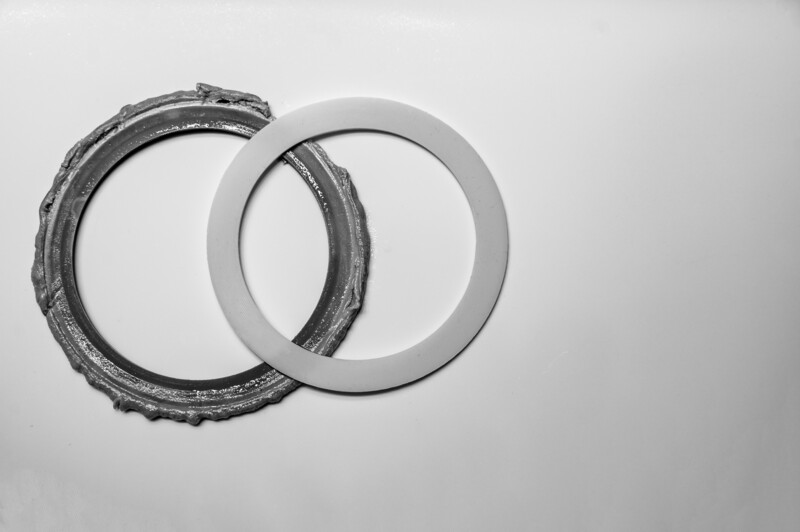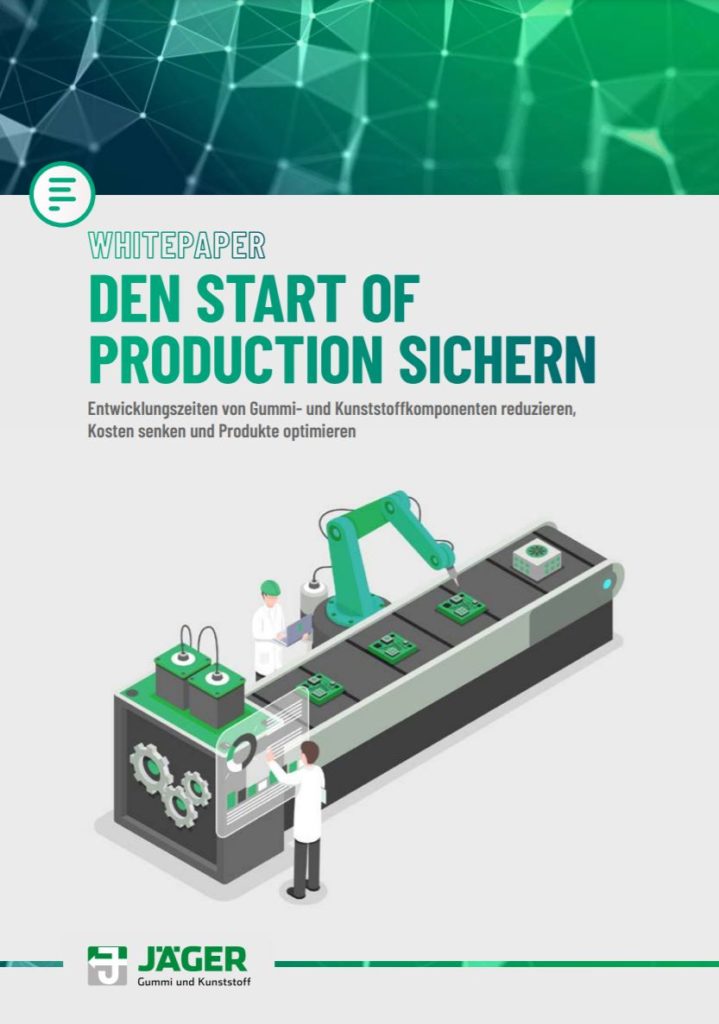
JÄGER Business Blog


WHITEPAPER
Find out which factors influence your SOP!
If a rubber seal is damaged during installation, this affects its sealing performance. On the one hand, the service life of the seal is considerably reduced. On the other hand, the risk of foreign substances or liquids penetrating the sealed object increases.
It is easy to blame the installer in such cases. However, installation damage is often the result of communication errors or a design that does not sufficiently take into account the context of the installation.
Many designers come from the metal sector and have little experience with elastomers. Therefore, they can hardly assess how the material behaves in practice. This sometimes leads to problems.
For example, the design sometimes overestimates the elasticity of rubber. It therefore provides too little space in the housing for the seal (“When in doubt, the material will give”). However, this compression exposes the seal to permanent pressure, which leads to material fatigue and failure over time. The component in which the seal is integrated can also be damaged by the pressure, for example by bending.
Similar problems can occur with O-rings if they are not the right size for the application. For example, if the seal is too small and has difficulty fitting over a pipe, it will be under permanent tension. Rubber can stretch, but eventually the material will fatigue and crack.
Another source of error is the production-related tolerances of elastomers. In principle, rubber cannot be manufactured as precisely as metal. There are always small deviations from the target values, but these are significantly higher than is usual in the metal sector. For this reason, designers should always allow for sufficient buffers when rubber molded parts are to be installed. Otherwise, seals that are at the upper end of the tolerance range can be squeezed off.
Sharp edges also pose a risk. If a seal is stretched over such an edge, it can easily be damaged. This applies both to assembly-related friction effects (e.g. when the gasket is pushed into position) and to crushing that only occurs over time. Here, on the one hand, the design must counteract and avoid corresponding geometries or round off edges. On the other hand, the assembly should take special care and watch out for possible damage to the seal.

Isolated mold in production
However, preventive measures in construction are not sufficient to effectively prevent assembly damage. In addition, the colleagues on site need to be informed about the special features of the material.
In the rubber sector, for example, resistance plays a major role. Every elastomer has susceptibilities or resistances to certain substances or influencing factors (temperatures, UV light, etc.). For example, if rubber comes into contact with an acid to which it is not resistant, it decomposes over time and loses its mechanical properties. This distinguishes elastomers from metals, which are naturally resistant to most environmental factors.
The assembly department must know for which operating conditions a rubber component is approved or which substances or temperatures are to be avoided. This does not only apply to permanent operation. Even brief contact with the wrong chemical during assembly can cause permanent damage and impair the sealing performance of the component. This could be, for example, cleaning agents or solvents with which the seal comes into contact during installation.
Special attention should be paid to storage conditions. Rubber components can only be stored for a limited period. After that, they lose their elastic properties and become brittle. How long this takes depends on the material as well as the environmental factors. Some elastomers cannot tolerate heat or cold. Others are resistant to ozone or UV light and should not be stored outdoors.
It is important that the assembly knows and takes into account these limitations. Otherwise, the seal may be damaged even before installation.
Another important point is the communication channel between design and assembly. The communication of information should take into account the work processes of the colleagues on site, otherwise it runs the risk of being lost. The assembly department usually does not have the time to study pages and pages of technical documentation before installing a rubber seal. They need the most important information as briefly and compactly as possible.
It is a good idea, for example, to print relevant inconsistencies in the form of hazard symbols on the packaging or enclose them as a handout. If risk factors are present, a note in the work instructions is also conceivable. An online overview, in which the assembly department can look up resistances, has also proven its worth.

Whitepaper: Secure the Start of Production
Learn which factors influence your SOP!

Christian Recht is a sales representative at Jäger in the office and in the field. The trained office administrator has been in charge of purchasing and technology for the new development of rubber and plastic components since 1991.
Share post now!
Jäger Gummi und Kunststoff GmbH
Lohweg 1
30559 Hannover
Tel. +49 511 – 53580
Fax +49 511 – 553394
info@jaeger-gk.de
Management:
Dipl.-Ing Sebastian Jäger
Julius Jäger, M.Sc.
Hanover Register Court HRB 59798
DE 813 314 161

Petra Dirlenbach